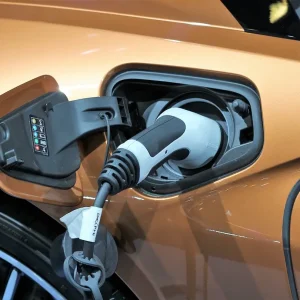Launched in March, TomTom’s new OptiDrive 360 telematics system uses vehicle and GPS location data to give motorists real-time driving advice aimed at boosting their fuel economy and improving how safe they are behind the wheel.
This predictive tech helps drivers to anticipate the road ahead better, even suggesting when they should ease off the accelerator – when approaching traffic lights or roundabouts for instance – when they should change gear and what speed they should travel at to reduce their fuel consumption most effectively.
The TomTom system was developed on the back of the EU’s Ecodriver project, which the navigation company was actively involved in. The project aims to cut emissions and fuel consumption by 20% in road transport, which could mean substantial savings across car fleets.
OptiDrive 360 actively coaches the driver, while users are also able to access snapshot data that gives them a rundown of their driving statistics. Fleet managers haven’t been forgotten either, with TomTom Telematics’ Webfleet platform offering managers both handy dashboards that highlight driving trends and in-depth reports on how their fleets are being used.
The software scores drivers across eight parameters: speeding, fuel consumption, gear shifting, coasting, idling, constant speed, green speed and driving events – including swerving or heavy braking incidents. This information can then be used by fleet managers to provide targeted training or performance reviews to high-risk drivers.
Despite only recently arriving on the market, the company claims OptiDrive 360 has already slashed fleets’ fuel use and emissions, with an early trial reporting a claimed fall in CO2 of 10% on average. Meanwhile, housing association DCH and snack manufacturer Tayto Group have each seen a 15% drop in fuel costs after adopting the TomTom system.
Our judges praised the software for taking a clever approach to how it encourages users to change their driving style. The software’s ability to tell the driver exactly when to ease off the throttle when approaching traffic lights, roundabouts or other hazards also won TomTom points against its rivals, with the possibility of real economy improvements across fleets.
Highly commended – Ford Telogis Fleet
Ford’s system uses real-time data to let fleet managers monitor their vehicles’ locations, fuel consumption and driver behaviour. It also allows vehicle operators to plan maintenance schedules based upon vehicle condition, minimising the downtime needed to service fleets, and track oil change warnings, tyre pressure, seatbelt usage and airbag status, while monitoring whether a user is driving safely and economically.
What also scored Ford points with the judges was the ability for vans to be equipped with the system from the factory, saving fleet managers the time and effort of having to organise fitting separately.
Highly commended – GreenRoad
GreenRoad provides information on how vehicles are driven, encouraging motorists to self-monitor and flag-up problem driving with fleet managers.Real-time in-vehicle feedback is offered to users in the form of a dashboard display that changes from green to amber or red to discourage drivers from manoeuvres such as heavy braking or violent cornering.
A series of accelerometers and GPS tracking enable alerts and concise reports to be sent to fleet managers, while employees can access detailed dashboards on their driving habits.One judge praised the system’s “instantaneous feedback” for providing “an excellent way to encourage drivers to modify their behaviour”





